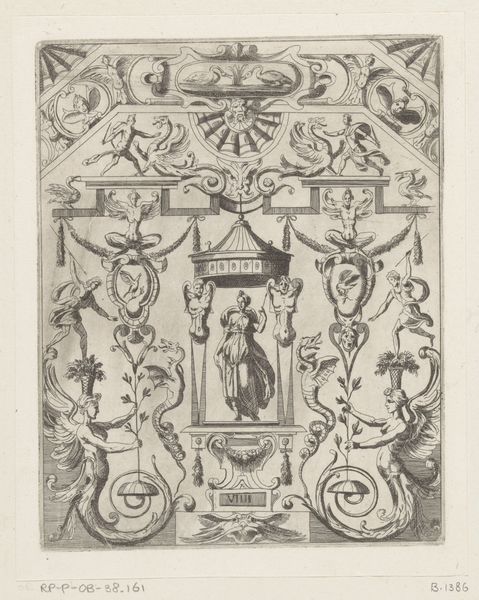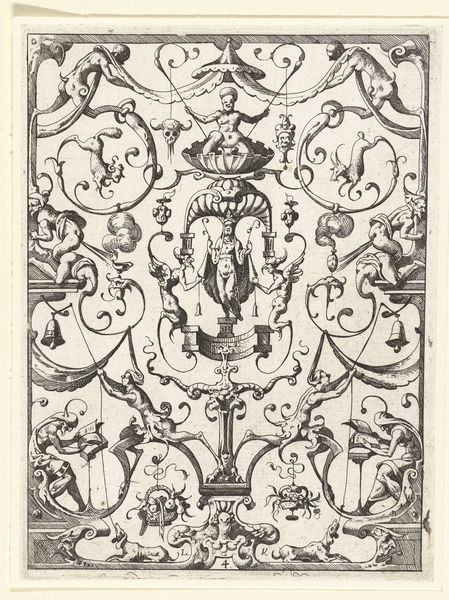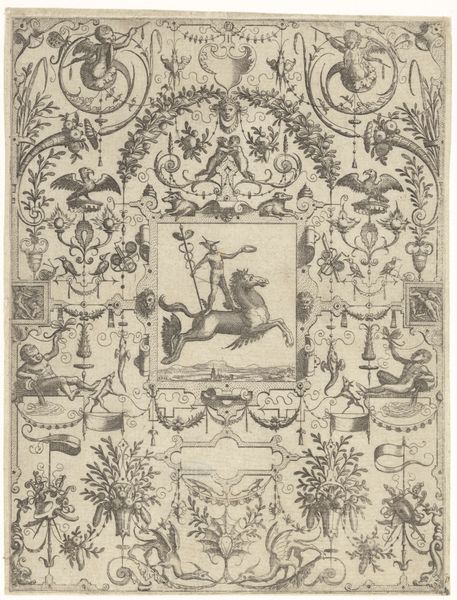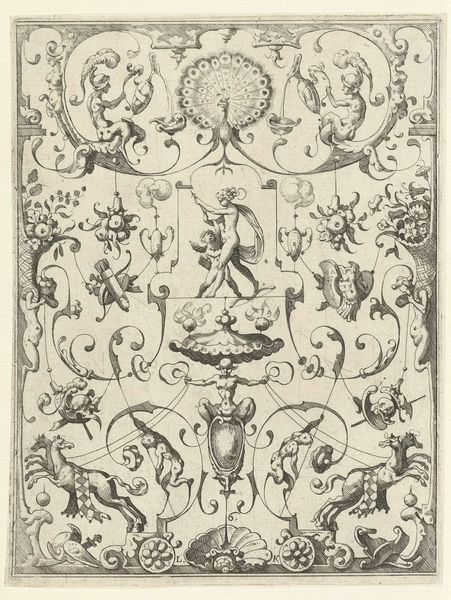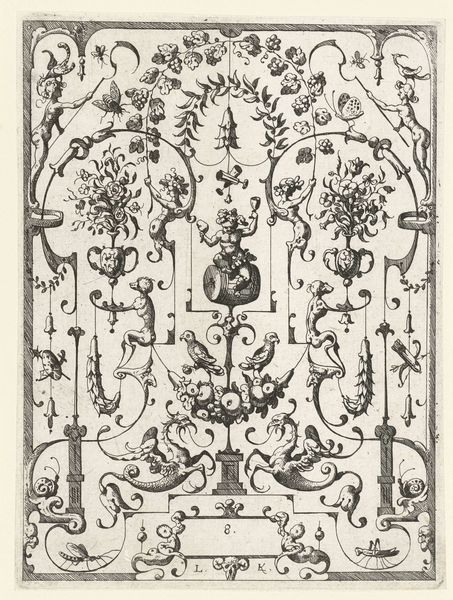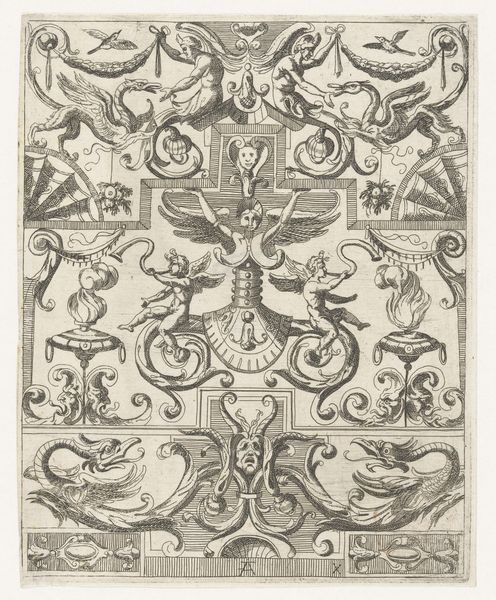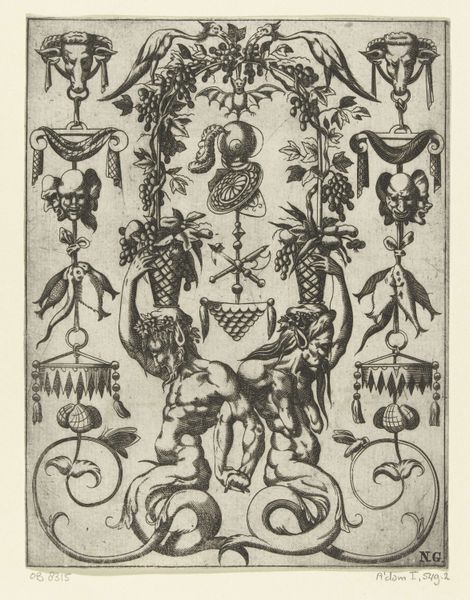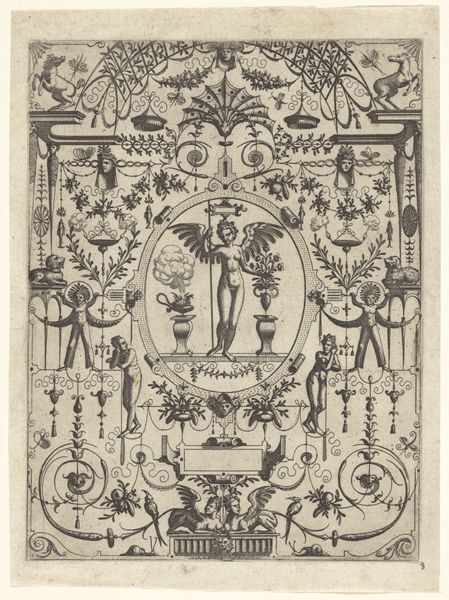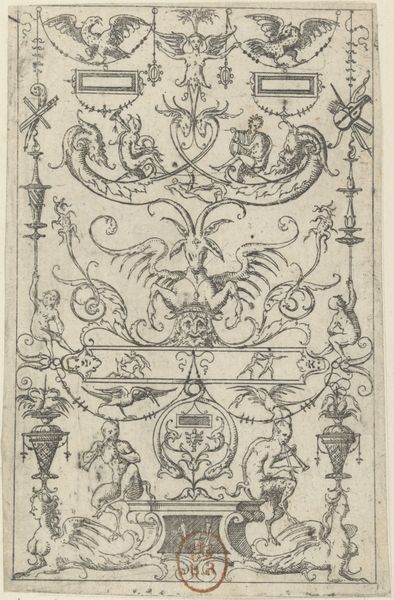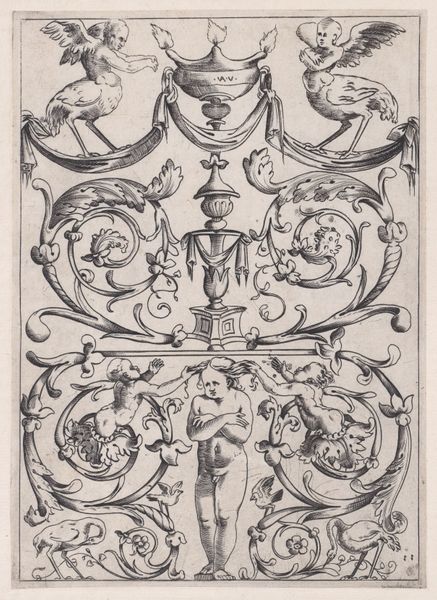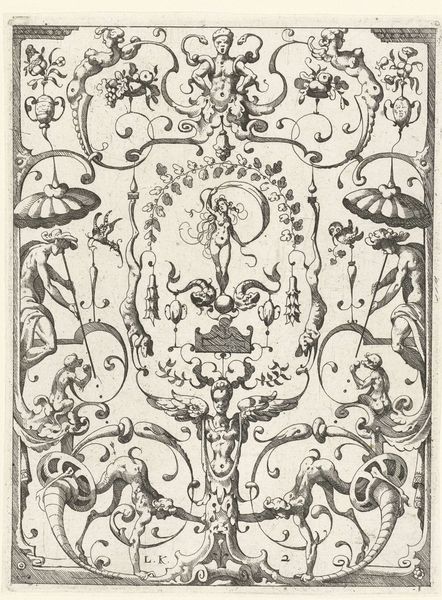
print, engraving
#
baroque
# print
#
old engraving style
#
ink line art
#
geometric
#
line
#
decorative-art
#
engraving
Dimensions: height 192 mm, width 146 mm
Copyright: Rijks Museum: Open Domain
Editor: Here we have Lucas Kilian’s “Vlakdecoratie met grotesken,” an engraving from 1607. It’s incredibly detailed; my eye just wants to jump from one little creature or flourish to the next. How would you describe the overall effect? Curator: Like tumbling down a rabbit hole of the imagination, isn’t it? It's Baroque excess at its finest. Remember, this was a time when the world felt… malleable. Old certainties were crumbling. What better way to reflect that than with hybrid creatures, impossible architectures, a kind of visual feast that simultaneously delights and disorients? Do you get a sense of the *purpose* of it, beyond decoration? Editor: I suppose it feels very performative and designed to show off technical mastery? But did these 'grotesques' have a specific meaning, beyond being generally weird? Curator: Ah, a keen question! "Grotesque," deriving from grotto, refers to a style rediscovered in ancient Roman ruins, full of fantastical forms. Now, consider the cultural context. The 17th century was mad for ornament – this wasn't *just* showing off; it was about conveying status, intellectual curiosity. The figures aren't always ‘meaningful’ in a literal sense, but are there to evoke, to hint at layers of esoteric knowledge and artistic license. Does seeing it this way change anything for you? Editor: I see it now. So it’s not just decorative. The overall feeling is that these dense arrays of whimsical imagery were designed to signal ‘wealthy intellectual’. A far cry from my simple appreciation of the craftmanship! Curator: Exactly! And it reflects an age when the boundaries of art, science, and philosophy were much more fluid than they are now. Something for us to keep in mind as we view art today!
Comments
No comments
Be the first to comment and join the conversation on the ultimate creative platform.
